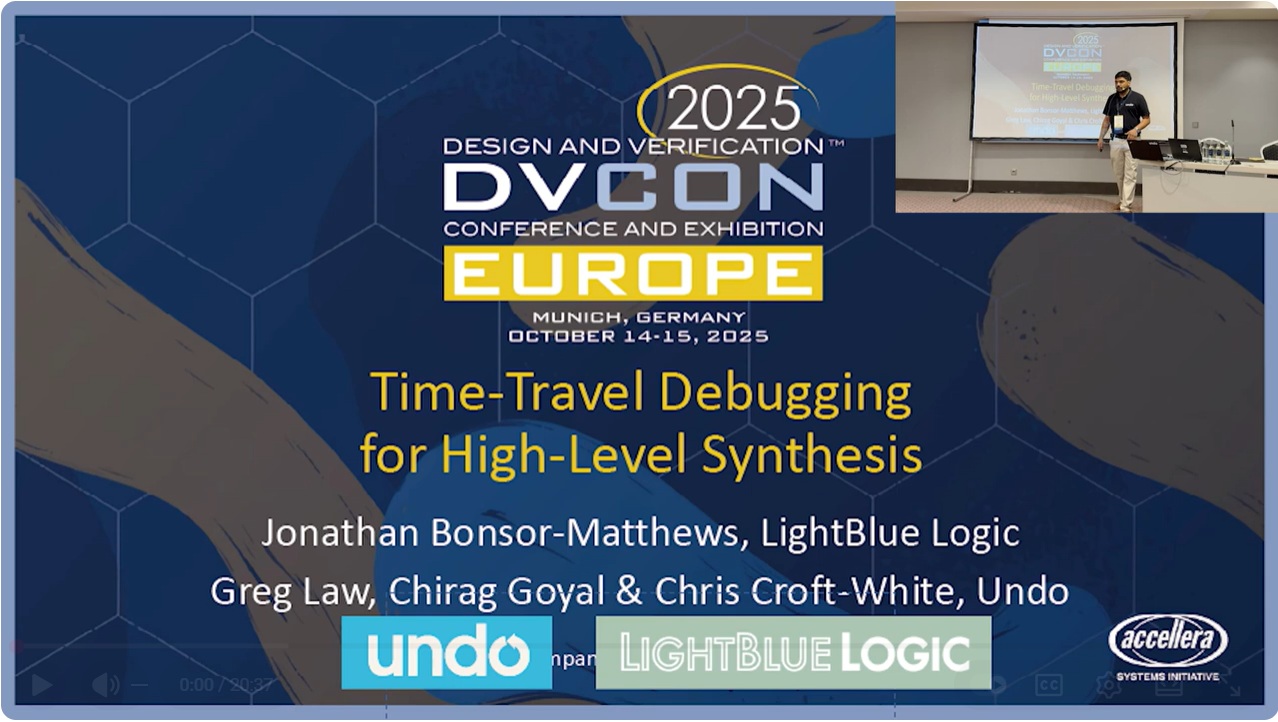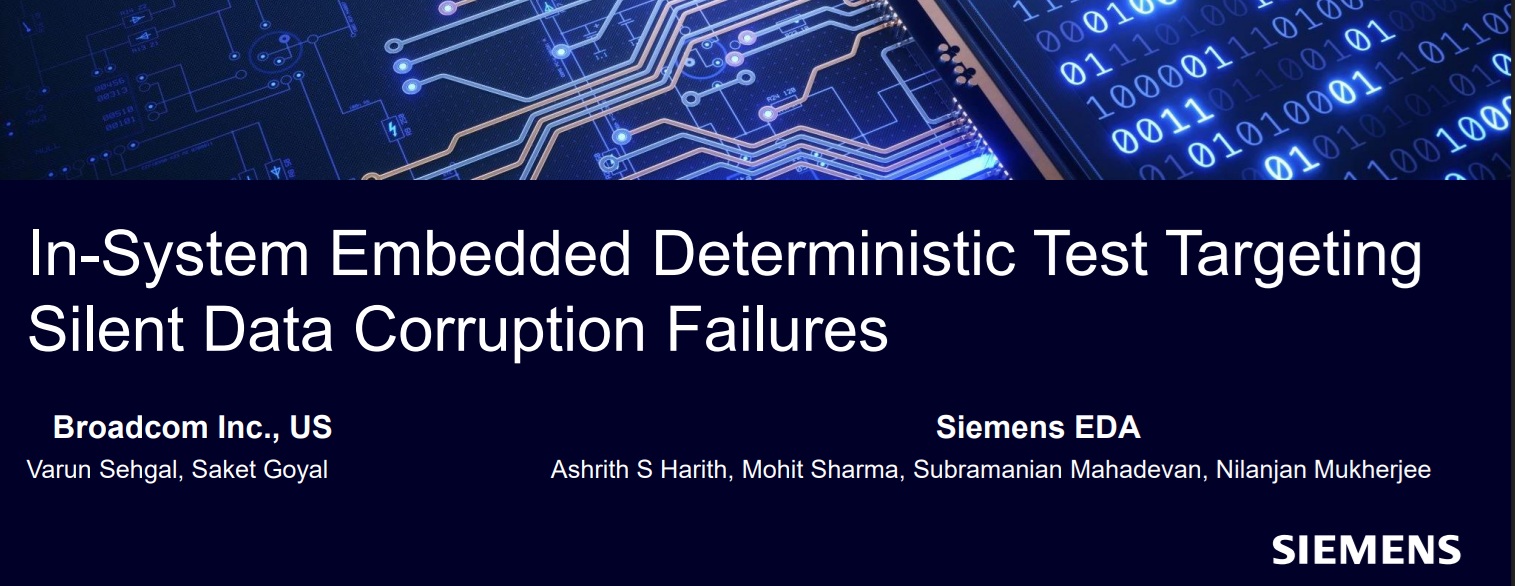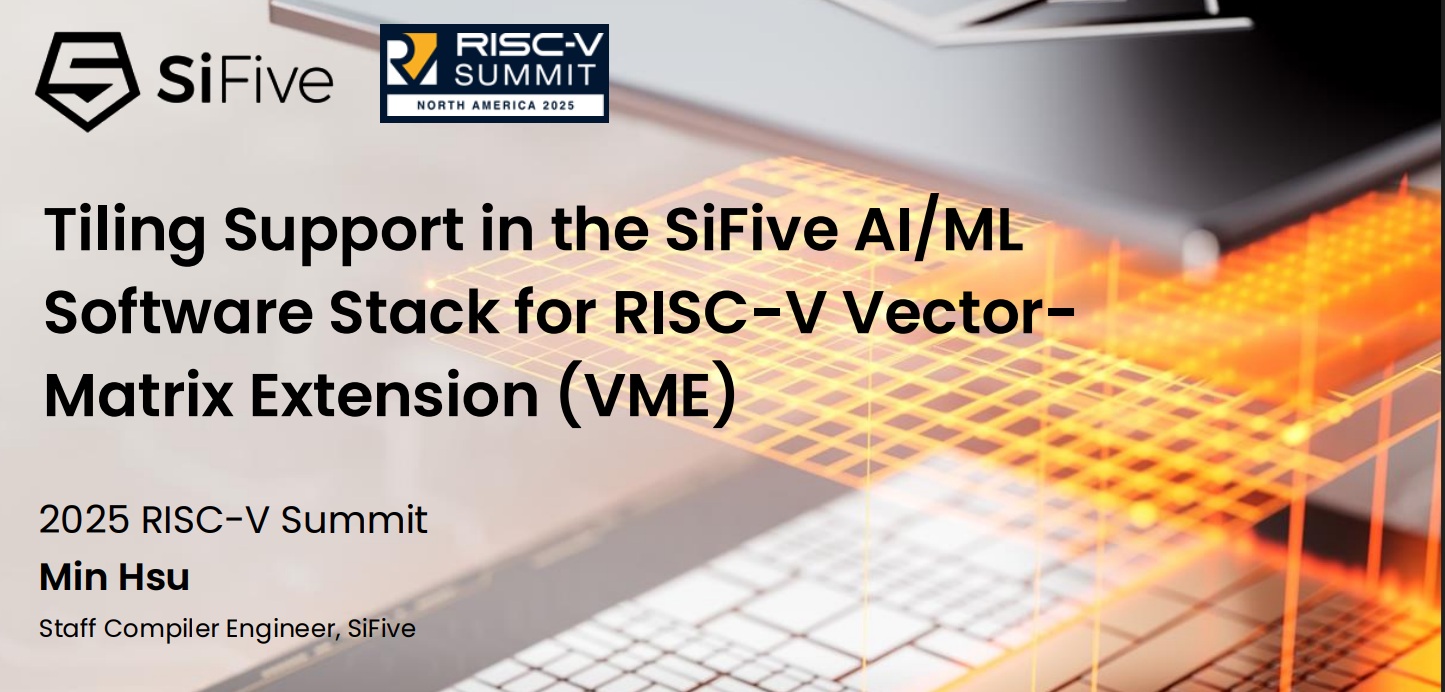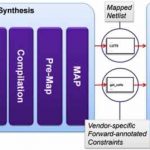For success, VR playback and content must be robust
The world of VR is split into two different areas, tethered PC VR and mobile VR. The reason why so many companies are going after mobile VR is because that’s where all of the volume is expected to be in VR. As a result, you have companies like Samsung Electronics and LG Electronics introducing… Read More
 Silicon Catalyst: Searching for the Next Great Start-upSilicon Catalyst has emerged as a distinctive force…Read More
Silicon Catalyst: Searching for the Next Great Start-upSilicon Catalyst has emerged as a distinctive force…Read More Revolutionizing Hardware Design Debugging with Time Travel TechnologyIn the semiconductor industry High-Level Synthesis (HLS) and…Read More
Revolutionizing Hardware Design Debugging with Time Travel TechnologyIn the semiconductor industry High-Level Synthesis (HLS) and…Read More Addressing Silent Data Corruption (SDC) with In-System Embedded Deterministic TestingSilent Data Corruption (SDC) represents a critical challenge…Read More
Addressing Silent Data Corruption (SDC) with In-System Embedded Deterministic TestingSilent Data Corruption (SDC) represents a critical challenge…Read More TSMC's 6th ESG AWARD Receives over 5,800 Proposals, Igniting Sustainability PassionTaiwan Semiconductor Manufacturing Company has once again demonstrated…Read More
TSMC's 6th ESG AWARD Receives over 5,800 Proposals, Igniting Sustainability PassionTaiwan Semiconductor Manufacturing Company has once again demonstrated…Read More Tiling Support in SiFive's AI/ML Software Stack for RISC-V Vector-Matrix ExtensionAt the 2025 RISC-V Summit North America, Min…Read More
Tiling Support in SiFive's AI/ML Software Stack for RISC-V Vector-Matrix ExtensionAt the 2025 RISC-V Summit North America, Min…Read MoreThe Future of Wearable Tech
Today, the wearable device market is a nascent, but growing one. There are about 160 unique wearable devices on the market, and IDTechEx predicts wearables will grow to a $70 billion market in the next ten years. The future of wearables, which includes activity trackers, smartwatches, smartglasses and embedded sensors in clothing,… Read More
Car Leasing, Car Sharing Don’t Mix
Not to be outdone by General Motors with its investment in Lyft, its acquisition of Cruise and its launch of Maven, BMW is in the process of relaunching and expanding the DriveNow car share service in the U.S. and may soon provide aftermarket hardware to enable Mini lessees to rent their cars, according to a Bloomberg report.
Why is NXP Moving to FD-SOI?
The latest generations of power efficient and full-featured applications processors in NXP’s very successful and broadly deployed i.MX platform are being manufactured on 28nm FD-SOI. The new i.MX 7 series leverages the 32-bit ARM v7-A core, targeting the general embedded, e-reader, medical, wearable and IoT markets, where… Read More
IoT Devices Making Inroads into Semicon Revenue
Last year IC Insights forecasted IOT semiconductor growth rate to be around 19% CAGR for next five years. And within that space, the O-S-D (Optoelectronics, Sensors, and Discrete) semiconductors were expected to grow at a CAGR of 26%, one among the fastest. In 2015, the O-S-D revenue was at $66.6 billion, i.e. ~19% of total semiconductor… Read More
Apple should buy Tesla and appoint Elon Musk as CEO!
Apple’s dismal earnings announcement shows why it badly needs to rethink its innovation model and leadership. Its last breakthrough innovation was the iPhone — which was released in 2007. Since then, Apple has simply been tweaking its componentry, adding faster processors and more advanced sensors, and playing with … Read More
3D NAND – Moore’s Law in the third dimension
For more than a decade 2D NAND has been the leading driver of lithography shrinks, for example, Samsung went from 120nm in 2003 to 16nm in 2014 with shrinks on an almost yearly basis, but the shrinks came at a price. At 16nm Self Aligned Quadruple Pattering (SAQP) was required for the most critical layers and patterning related costs… Read More
One FPGA synthesis flow for different IP types
Both Altera and Xilinx are innovative companies with robust ecosystems, right? It would be a terrible shame if you located the perfect FPGA IP block for a design, but couldn’t use it because it was in the “wrong” format for your preferred FPGA. What if there were a way around that?
There is a compelling argument to use each FPGA vendor’s… Read More
Neural nets for Qualcomm Snapdragon
Neural nets are hot these days. In this forum certainly you can’t swing a cat without hitting multiple articles on the topic – I’ve written some myself. For me there are two reasons for this interest. First, neural nets are amazingly successful at what they do, for example in image recognition where they can beat… Read More
Seven Reasons to Attend DAC in Austin
I’m attending the 53rd Design Automation Conference (DAC) in Austin, Texas starting June 5th, and there are at least seven reasons that you should consider attending as well. For decades now DAC has been the premier place for all the players in our semiconductor ecosystem to get together: Academics, Commercial vendors … Read More



Quantum Advantage is About the Algorithm, not the Computer